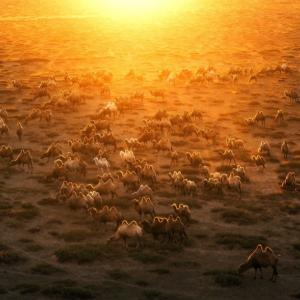Decisions Made at the Cabinet Session
Politics
Ulaanbaatar, February 14, 2024 /MONTSAME/. During its regular session on February 14, 2024, the Cabinet made the following decisions:
Resolution of the Government of Mongolia on Implementing the President's Decree on Honoring and Promoting the Morin Khuur Issued
To implement the Decree of the President of Mongolia on Honoring and Promoting the Morin Khuur, the Government of Mongolia issued a Resolution, outlining several key measures.
In connection with the expansion of the Morin Khuur Ensemble into an orchestra, the Government defined the composition of the Morin Khuur Orchestra to be 61 members. Minister of Culture of Mongolia Nomin Chinbat was tasked with revising and approving the organizational structure of the Morin Khuur Orchestra and resolving the additional necessary funding related to the staff expansion of the Mongolian Philharmonic within the approved budget of 2024.
In light of the Morin Khuur Ensemble's expansion, the Cabinet decided to cover the costs of renewing the artists' clothing and musical instruments from the Government's Reserve Fund.
Nationwide Heightened State of Readiness for Disaster Protection Announced
Deputy Prime Minister of Mongolia and Head of the State Emergency Commission Amarsaikhan Sainbuyan presented the current situation of wintering and springtime in rural areas at the Cabinet meeting.
The Information and Research Institute of Meteorology, Hydrology, and Environment of Mongolia reports that as of February 10, 2024, more than 80 percent of the entire territory of Mongolia was covered in snow. The Altai, Khangai, Khentii, and Khuvsgul mountain ranges, Khan Khukh, Khantaishir, Dornod Steppe, and some parts of the Gobi region are covered with from 10 to 36 centimeters of snow blankets, while other areas with 1 to 9 centimeters. In areas where blizzards formed snowdrifts, snow depth reached 60 centimeters and up to 100 centimeters in ravines.
Following the Mongolian Government’s Resolution №286, wintering conditions were assessed throughout Mongolia. According to the assessment, 21 soums of five aimags are experiencing iron (or glass) dzud*, with snow density reaching 0.35-1.05 g/cm3. Additionally, 89 soums of 17 aimags face white dzud**, and 82 soums of 17 aimags have moderate white dzud.
As of the date, 508,039 head of livestock perished across Mongolia due to the harsh weather conditions. The five aimags with the highest livestock death tolls were Sukhbaatar, Khentii, Dornogobi, Arkhangai, and Dornod.
Responding to worsening winter and spring conditions impacting the livestock industry, the Cabinet declared a nationwide heightened state of readiness for disaster protection.
Prime Minister of Mongolia Oyun-Erdene Luvsannamsrai ordered relevant officials to take all necessary measures to overcome the challenges in the livestock sector with minimal losses. Specifically, the Prime Minister tasked with:
- Organizing the evacuation of households potentially to be affected by spring floods,
- Clearing roads and mountain passes blocked by heavy snowfall,
- Launching a campaign to assist herders in cooperation with enterprises, international organizations, foreign projects and programs and the public, appealing for participation,
- Promoting the involvement of herders in early detection and disease diagnosis,
- Surveying herders who lost their livestock due to dzud,
- Restocking affected herders with livestock,
- Involving affected herders in social security and welfare programs,
- Allocating local budget surpluses to support herders.
Additionally, Finance Minister of Mongolia B. Javkhlan was instructed to draft a Law on Exempting Certain Imported Goods from Customs Duties and Value Added Tax. The draft Law will then be submitted to the Government of Mongolia for discussion.
*Iron (or glass) dzud happens when grasses are covered with impenetrable ice that is produced through melted and refrozen snow (most likely occurring during spring and autumn).
**White dzud defined as conditions during which grasses that grow during the summer and decay during the subsequent cold season are covered by deep snow, preventing grazing. The snow depth during these conditions substantially exceeds plant height. This is the most common and disastrous dzud type.
 Ulaanbaatar
Ulaanbaatar














































































